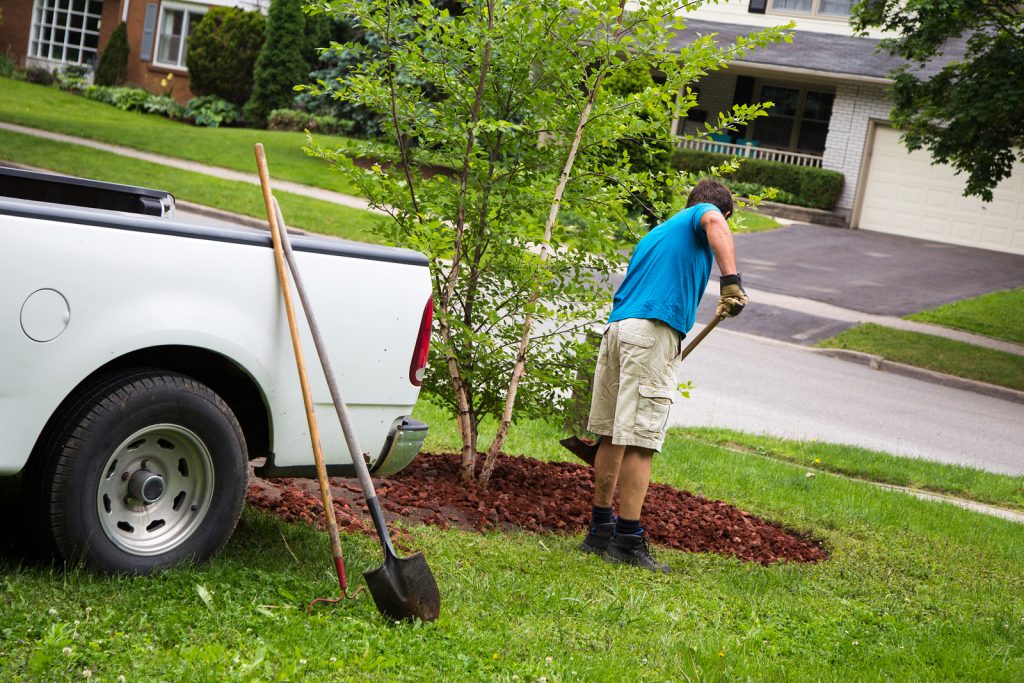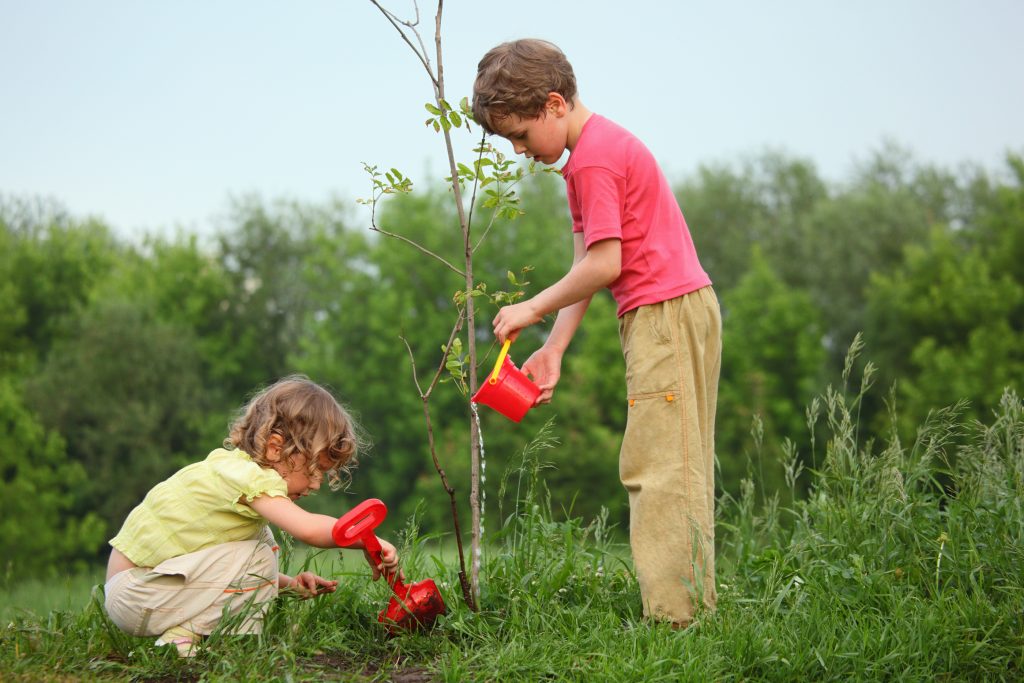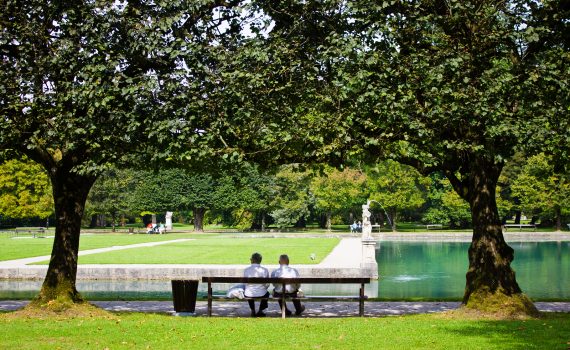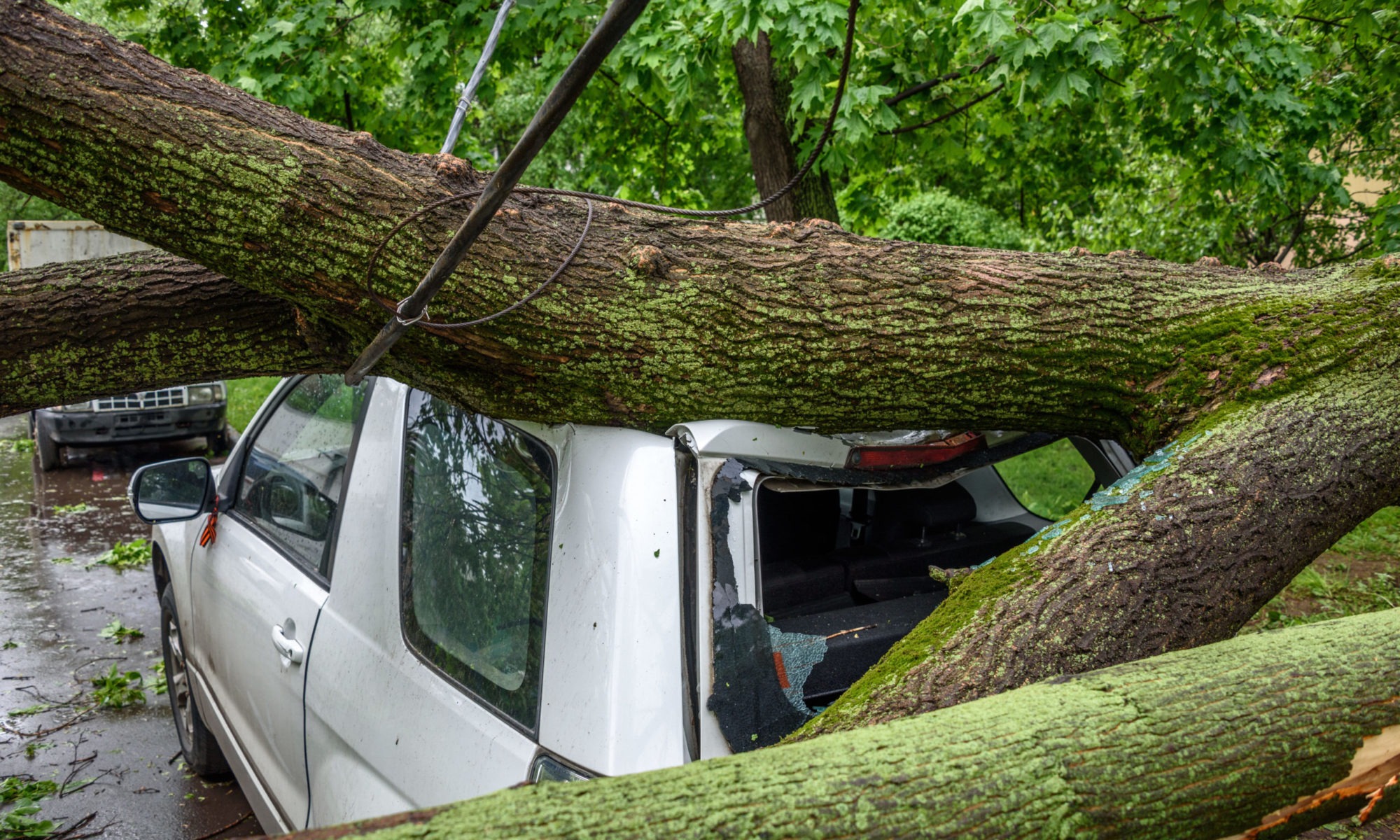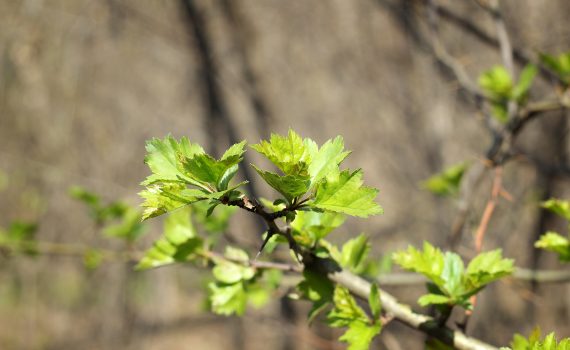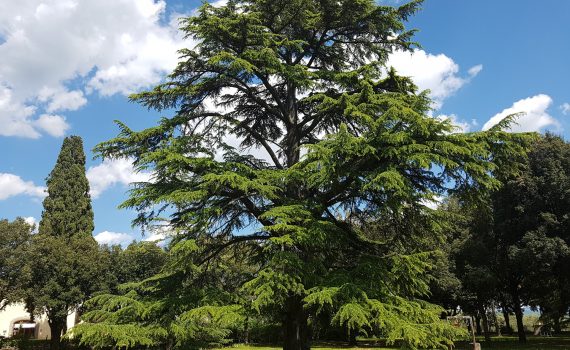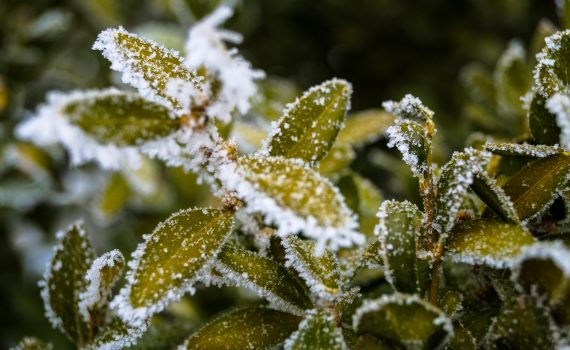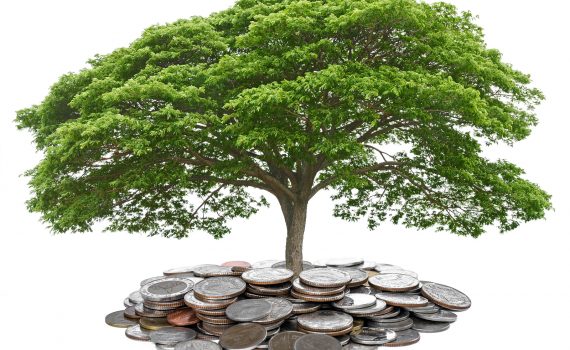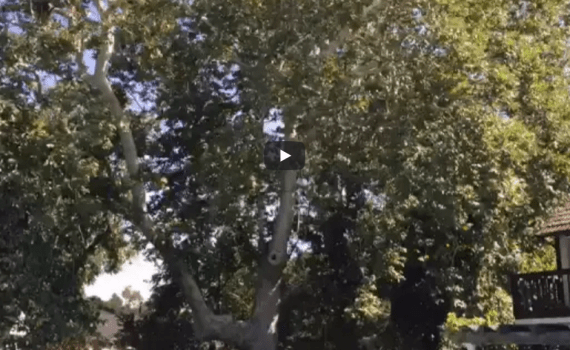[embedyt] https://www.youtube.com/watch?v=lx-6V5IWv-A[/embedyt]
When is Best to Transplant Trees?
Maybe when you moved into your dream home, you noticed that beautiful tree in your backyard and thought, that would look so good if I could put it in my front yard. Or your tree has flourished to the point of outgrowing its current location. When is a good time to move/transplant your tree?
As with most things, it all depends on the type of tree. However, the biggest rule of thumb is to try to move it when it is dormant and not freezing. You want to move it before the colder weather hits or before the tree starts sprouting new foliage.
What is dormant?
During the winter months, trees go into their form of hibernation, called dormancy. While they may seem like they are sleeping or even dead, they’re doing quite a bit to keep going. They drop their leaves and fill their cells with water. Upon the arrival of winter, some of this water goes into the spaces between the cells. This water then becomes the barrier for the trees to protect against possible freezing.
Why transplant trees when they’re dormant?
During the non-dormancy period, trees are heavily reliant on the steady water flow coming to their roots. If this is cut off during the critical period, the tree maybe harmed and have a hard time adapting to its new environment. It would be similar to being in a nice warm shower and having someone dump ice cold water on you.
Dormant trees do not rely on water as much. They’ve lost their leaves and any fruits. They have time to establish their roots and get acclimated to their new environment before the new water supply becomes essential.
However, a critical warning. Do not move trees during extreme cold spells. This could dramatically damage the roots and prevent proper transplantation.
The following are some general rules of thumb for transplanting:
Pine/Evergreen: Fall
Oak: February/March
Maple: Late Fall
Fruit: Early
If you are wanting to transplant your tree, talk to our certified arborist at Sexy Trees. He can provide you key details to avoid damaging your tree.
Planting Trees in the Winter
Many people look at the barren parts of their garden and wonder when they can plant that fruit tree they’ve always wanted to have. They know it is winter so they don’t want to waste time planting something that will die due to the weather. The good news is that you can plant many things during the winter, especially in the warmer temperatures of the Bay Area. However, even without these weather conditions, the best time of year to plant most trees actually occurs in late winter.
Dormancy
In order to understand the basics of planting trees, let’s discuss a key stage in a tree’s life, dormancy. A person recognizes this as the stage in which their leaves usually fall off and it appears that the tree is dead. In reality, the tree is in a “sleep” mode whereby it is using less energy and not growing at the same rate. During this portion of life, a tree can withstand changes and thereby be moved, planted, and nurtured a lot easier. As a result, many people start planting their trees in the middle to late winter while they are in dormancy. Thus, when they enter the spring and key stage of growth, their roots are fully established in their new environment.
Evergreens
What about those trees that do not lose their leaves, the evergreens? The short answer is that the same time period does apply with a bit more leniency. Evergreens tend to withstand changes a lot better and aren’t as prone to dramatic shifts. If anything, their ideal period for transferring can go longer due to their genetics.
Now is the time (if it’s late winter)
If you are wanting to get some trees planted, you should start selecting that ideal tree and begin planting it in the next thirty days or so. Sexy Trees has a certified arborist with years of experience. If you have questions about planting trees, feel free to reach out at Sexytrees.com.
Alamo Tree Care: 5 Tips For Caring For Mature Trees
Mature trees are an asset to your landscape. Fully developed trees have required years of nurturing growth and responsible Alamo tree . This investment should not be taken lightly. When caring for mature trees, you want to protect this investment, and ensure that your mature trees continue to provide shade and beauty to your landscapes. Older trees require specific care and nurturing to continue to flourish and remain protected from disease and pests. Here we look at five tips to help you best care for and look after your trees.
Water Your Trees Correctly
Mature trees need an appropriate amount of water, just like young trees. Using the correct technique to water your mature trees is essential to ensure your trees get the right amount of water in the right way. In the absence of soaking rain, you should deeply water your trees at least once a month. It can be helpful to consult with an experienced arborist regarding the specific water needs for your unique tree type.
Prune Mature Trees Properly
Regular pruning is important for trees to remove dead or diseased branches, and to manage excess growth to reduce weight. Heavy branches can break and fall, causing damage to the tree or your property. However, incorrect pruning can severely damage your mature tree, eventually causing tree death. Tree topping is a particularly harmful practice that can eventually destroy your tree by removing it’s most important food producing branches. When pruning a mature tree, it’s best to call a Alamo tree certified arborist to prune with the correct technique that is safest for both you and your tree.
Protect Tree Roots
Mature tree roots can continue growing to help support the tree. However, the large roots of mature trees can sometimes create issues for surrounding structures. If tree roots are disrupting your yard, it’s important to call a certified arborist for expert advice and management. Covering exposed tree roots with mulch is a useful way to protect both the roots and visitors to your garden, however it’s important not to apply mulch too close to the tree trunk.
Inspect Mature Trees For Pests And Diseases
Mature trees that have undergone some stress, been damaged, or incorrectly pruned can be left more prone to tree diseases and pest infestation. Inspect your trees periodically for signs of problems, such as weak branches, discolored leaves, or visible pests.
Nourish the Soil
Trees get all their nutrients from the surrounding soil so it’s important to keep the soil healthy as your trees develop and mature. Applying wood mulch can help to both protect the soil and supply nutrients and microbes that support healthy tree growth. Your local arborist can deliver a healthy supply of mulch direct to your yard to keep your mature trees thriving.
Offering shade, beauty, and structure to your yard, your trees are an investment that you will want to protect. Look after your trees with these five essential tips to best nurture their continued growth.
Contact Alamo Tree Care
Contact Llamas Tree Service for any location in the bay area, including Albany, Danville, Berkeley, Oakland, Walnut Creek, Concord, San Pablo, San Leandro, Fairfield, Hercules, Kensington, Port Costa, Piedmont, Orinda, Lafayette, El Cerrito, El Sobrante, or Alamo tree .
4 Signs Your Tree Needs Cabling And Bracing
The trees in your garden are living entities and need attention and care in order to flourish. In some cases, trees need first aid and even ‘surgery’ to help maintain their health and structure. Cabling and bracing is a technique that can be applied by a skilled arborist to help support your trees branches and trunks. This can extend a tree’s life if done correctly, allowing your trees to flourish for longer. Here we look at 4 signs that your tree needs expert attention from a qualified arborist with professional cabling and bracing.
- Leaning Trees
Trees that are dead or dying tend to lean, however a leaning tree doesn’t always signify a problem. Cabling and bracing can’t be used to save diseased or dying trees, but it can help to provide structure and support to trees that are weak, but healthy. Trees may normally have a slight lean to them. A skilled arborist can inspect your trees and assess whether they are leaning normally, or whether there are adverse underlying causes. A tree’s root system can grow to accommodate and calibrate a lean, but in some cases cabling and bracing may be needed to support the tree to prevent cracking and hazardous tree falls.
- Cracks in the Trunk or Branches
Cracks in the tree trunks and branches can be a sign that your tree is becoming unbalanced and overburdened. Cracking or splitting in the trunk of your tree can represent a particularly serious structural issue, and you should enlist the assistance of a professional arborist as soon as possible. In some cases, cabling and bracing can be applied to help strengthen and reinforce your tree when the problem is caught early to prevent cracks deepening and causing split trunks. Cracked branches may not be worth trying to recover, but it’s important to remove them to avoid potentially dangerous falling branches.
- Multiple Trunks
It’s not uncommon for trees to split at the trunk, with the two trunks diverging in a V shape. This can be called co-dominant stems or V-crotch trunks. As the tree grows, these multiple trunks can form a weak spot, as one trunk becomes larger than the other and threatens to topple the tree. Cabling and bracing can help to strengthen divergent trunks so they don’t split too far apart and cause breakage. However, in some cases one of the trunks may need to be removed by your arborist to preserve the tree.
- You’re Due For Adverse Weather
Storms, rain and strong winds can really put on a strain on your trees and worsen any structural issues you may already be experiencing. If you’re expecting adverse weather, have your trees inspected and fitted with cables and bracing if necessary to protect against the harsh conditions. Professional cabling and bracing from a skilled arborist can help to keep your trees and branches safe during harsh weather, adding extra strength and reinforcement while also allowing flexibility, to keep your branches intact.
Cabling and bracing can be a useful tool to protect and preserve your trees when implemented safely by a professional arborist. Talk to us about your tree’s needs and whether cabling and bracing is right for your trees.
Our tree experts service the following areas: Walnut Creek, Concord, Pleasant Hill, Lafayette, Orinda, Oakland, Albany, Alhambra Valley, Alamo, Berkeley, Danville, Diablo, El Cerrito, El Sobrante, Hercules, Kensington, Sunol, Saranap, San Pablo, Reliez Valley, Piedmont, Port Costa, San Leandro, Vine Hill, Martinez, Benicia, Fairfield
When Do Trees Grow Their New Leaves?
While bare branches and naked landscapes are the telltale signs of winter, we expectantly await fresh, new growth in the spring. Warmer weather is the trees’ cue to leaf out and present their new springtime growth. But how do trees know when to grow their new leaves? And is there any way for us to predict this phenomenon?
While we can’t pinpoint with accuracy the date that trees will begin to sprout their new growth, there are various ways we can estimate the approximate timing by observing the environmental patterns trees respond to. This can help us to establish when to expect new growth by and how to best care for our trees to ensure they put forth new growth on time.
The Cue for Trees to Leaf Out
Trees sprout their new leaves according to temperature changes that are usually associated with going from winter to spring. During cold weather, it doesn’t make sense for trees to sprout new growth, with less water availability and sunlight. But once the weather starts warming up again, it’s time to capitalize on the increased sunlight and water availability.
Trees respond to two different aspects of our changing seasons. First, there must be a period of prolonged cold weather, at chilling temperatures between 25 and 50 degrees Fahrenheit. This helps to juxtapose the incoming warmer weather. These cooler temperatures trigger the balance of hormones and enzymes needed to break out new growth when warmer temperatures come.
While new growth won’t break through on the first warm day, once the days are more consistently warm, it signals to the tree that spring is here and it’s time for new growth.
Secondly trees respond to the longer days and shorter nights that come with changing seasons, syncing their new growth with the signals of spring.
What If Your Trees Don’t Sprout New Growth
There are several factors that can affect or inhibit new tree growth. Whereas trees have been shown to adapt to changing climate conditions, sudden changes can mean that trees don’t receive enough chilling to break dormancy once warmer weather comes.
If your tree seems to be barren but other trees in your area are sprouting new leaves and branches, don’t panic. It may be that your particular species of tree breaks out a little later than others. This is a normal phenomenon.
If you do become concerned that your tree is remaining leafless for longer than seems normal, contact your local arborist. An arborist will not only be able to diagnose any specific issues with your particular tree, but can also help you understand any local environmental trends that may be affecting new growth this year. If a tree is green inside, it’s still alive and waiting for its time to sprout forth.
However, if your tree doesn’t sprout or the new growth is shriveled or black you may need an arborist’s expert assistance to correct the issue.
While all trees sprout their new springtime growth on their own timing, if you’re concerned about your trees new growth, contact your local arborist for professional advice.
Lafayette Tree Removal – Cedar Tree
5 Tips for Preparing Your Trees and Shrubs for Winter
Now is the ideal time to prepare for winter by tidying your yard and protecting your trees and shrubs in advance of the cooler weather. Tree care undertaken before the mercury starts to drop can protect trees from dry conditions and damage, as well as help prepare you for the next year’s season. Here we look at 5 tips to help you care for your trees and shrubs and prepare your garden for winter.
Light Tree Pruning
Tree pruning and thinning of branches before winter can help to reduce canopy weight and the stress on your tree for when temperatures drop and sunlight is reduced. Trees often can’t sustain the rapid growth they put forth in summer, so light tree trimming before winter can help to maintain tree health and vitality and prevent dropped branches. Pruning and thinning foliage in trees and shrubs helps to make best use of diminished sunlight in winter.
Mulching
Mulch has a multitude of benefits for trees and shrubs, and mulching in winter can produce some of the greatest advantages. Mulching protects trees and plants from drastic temperature changes, insulates roots, and provides vital nutrition to the soil. Mulch also helps your soil to retain moisture and controls weed growth around your trees. Your local arborist can deliver mulch to your door for easy use in your yard, or you can keep your own mulch after removing a tree.
Cable and Brace Weak Spots
Colder winter temperatures, less sunshine and reduced soil nutrition can be hard on trees, and these conditions place more pressure on weak branches. Cabling and bracing can help to support weak branches through difficult conditions, so call your local arborist for an inspection. A professional arborist can swiftly and accurately ascertain the stability of your branches, identify weak spots, and apply expert cabling and bracing where necessary.
Nourish the Soil
Winter is a time where nutrients in the soil can be more difficult for tree and plant roots to access, and the soil nutrient levels can be depleted. Nourish the soil in fall by applying mulch and fertilizer while the weather is not yet cold, in order to build up nutrient stores deep in the soil. Before the cold weather sets in, it’s also the ideal time to water deeply to prepare the soil and your trees for winter.
Remove Problem Trees
Dead or dying trees can often cause issues in winter, as storms and bad weather can knock them down causing damage to people or property. Be sure to have the trees in your yard and around your house inspected by a professional arborist to check for disease and pests, and have any dead or dying trees professionally removed. Undertake stump grinding to remove all traces of dead trees and prevent tree diseases being spread through your yard.
Winter can be a hard time on your trees and shrubs, but good preparation for the cooler months can help your yard stay beautiful and healthy until spring.
5 Ways To Save Time And Money on Lawn Care
If you have a grass lawn at your home in California, chances are it’s looking a little worse for wear after the hot, dry summer we’ve had. With winter around the corner, you may need to give your lawn a little TLC to bring it back to life. But lawn care can be a time consuming and money wasting affair, particularly when environmental conditions are no longer supporting healthy lawn growth. So what can you do to reduce the time and money you spend on lawn care while still keeping your garden looking beautiful? Here we look at 5 ways to save money and time on lawn care, so you can spend more time enjoying your garden, and less time fixing it.
- Use Smart Watering Techniques
Knowing how to water your garden properly can not only help maintain the health of your lawn and trees, it can also help to save time and precious water sources. Water your lawn less frequently, but water deeply, allowing water to soak deep into the soil and directly feed the roots.
Tree death and tree removal during hot, dry weather can leave lawns exposed and disposed to more rapid damage. As the lawn is often an open and exposed patch of ground, it’s highly prone to evaporation. That’s why it’s important to water at a time when there isn’t much sun, such as very early in the morning or late in the afternoon, to prevent evaporative water loss.
- Mulch Your Lawn
Mulching your lawn, flower beds and tree roots is essential for maintaining moisture and nutrient levels in the soil, and also helps you save time feeding and watering your garden. Tree stump removal and tree stump grinding often leaves behind quality mulch that can be used in your garden. Mulch can be delivered by your local arborist, or you can use the clippings from tree trimmings or grass cuttings.
- Choose Low Maintenance Grass Varieties
95% of American lawns have bluegrass for their lawn, which is a particularly thirsty variety that requires a lot of water and care. Slow growth, drought resistant grasses are lower maintenance and make lawn car easier, and these include varieties such as Zoysia, Buffalo, Bermuda, St Augustine and Bahia grass.
- Try A Grass Free ‘Lawn’
If you really want to reduce the cost and maintenance time for your lawn, perhaps the best option is to forego the grass altogether and opt for a grass free landscaping solution. Placing some drought resistant trees and plants in your garden and replacing grass ground cover with stones, pebbles, succulents, ‘hardscapes’ or artificial grass can help to foster a lower maintenance garden that is just as beautiful and easy to enjoy.
- Check Regularly For Pests and Damage
Lawns can quickly suffer under the effects of pests, and so should be checked regularly for signs of damage. Professional lawn services can help you quickly identify lawn issues and provide a solution if you need it. Quick treatment can save lawns, trees and plants in your garden and save you expense and trouble in the long run.
If excessive time and money investments for lawn care are getting you down, think about utilizing these 5 ways to reduce cost and time spent on lawn care in your home garden.
Sunol Tree Pruning
Sunol CA large sycamore tree reducing weight from target areas and pruning away from home.
 Bringing Sexy Back Into Your Yards
Bringing Sexy Back Into Your Yards 
